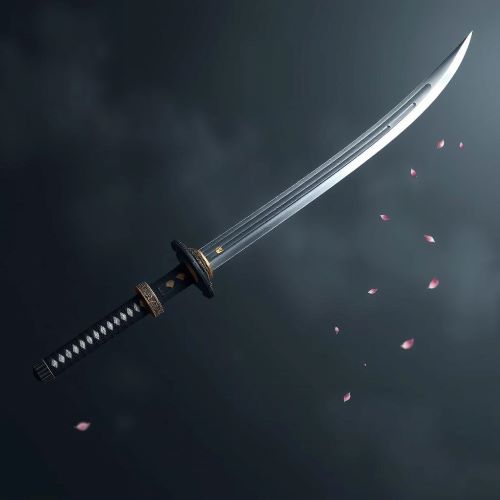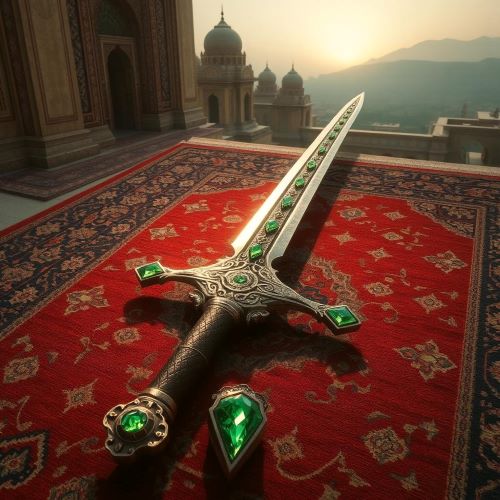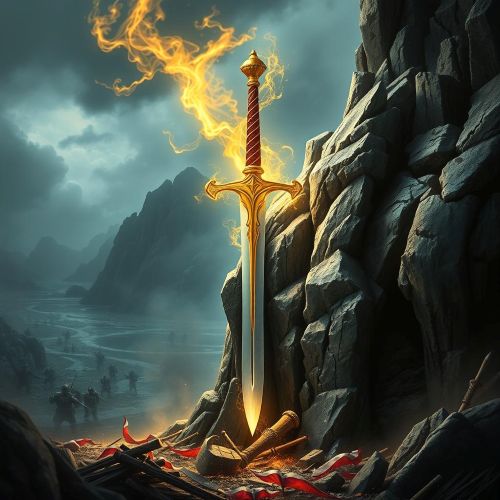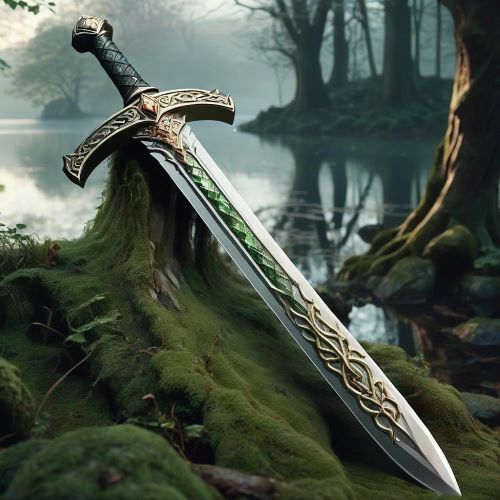Claíomh Solais : Sword of Light
Claíomh Solais
Introduction
The Claíomh Solais, translated as the Sword of Light, stands as one of the most captivating weapons in Celtic lore. Found across Irish and Scottish Gaelic traditions, it is celebrated not only as a magical weapon but also as a radiant emblem of truth, justice, and destiny. Unlike ordinary blades, the Claíomh Solais is woven into epic quests, shaping the fates of heroes and testing their courage against impossible odds. Its mythology reveals a world where weapons are more than tools of war—they are vessels of divine power, moral order, and cultural identity. By tracing the stories of the Claíomh Solais, one gains insight into how Celtic peoples viewed heroism, supernatural forces, and the enduring struggle between light and darkness.
Origins
The origins of the Claíomh Solais are deeply rooted in Ireland’s mythological cycles and the Gaelic storytelling tradition. Folklorists often classify it under the motif of the quest object, a prize whose pursuit defines a hero’s journey. Some tales suggest it was forged in the otherworldly city of Findias, the same place that produced the treasures of the Tuatha Dé Danann. In these accounts, the sword belonged to Nuada Airgeadlámh, the Silver-Handed King, who led the divine race of the Tuatha before Lugh took power.
Linguistically, the sword’s name has shifted over time, reflecting both its cultural reach and its adaptability. In Old Irish it appears as Claidheamh Soluis, while in Scottish Gaelic it becomes Claidheamh Geal Solais, often glossed as the “White Glaive of Light.” The image of the shining sword remained consistent across variations: a supernatural weapon guarded by giants, witches, or druids, obtainable only by those pure of heart or bound by destiny. Its presence in both Irish and Scottish folklore underlines its importance as a shared cultural myth.
Think you know your myths and legends? Dive into the world of ancient stories and test your knowledge with our engaging quizzes on Mythlok!
Powers
The Claíomh Solais was no ordinary weapon; it was believed to blaze with the brilliance of the sun itself. Its radiant glow pierced darkness, illuminating truth and stripping away deception. Beyond its dazzling light, the sword possessed invincible cutting power, rendering foes defenseless. In many accounts, once the sword was drawn, no enemy could withstand or escape its stroke.
The sword’s magical properties were not confined to brute strength. It symbolized divine justice, granting victory only to those deemed worthy. Some stories describe its light as purifying, driving away evil spirits or dispelling enchantments. Others link it to sacred obligations, where a hero under geis—a ritual vow—must undertake perilous challenges until the Claíomh Solais is won. In this way, the sword served as both a literal and symbolic instrument of transformation, demanding personal growth and moral integrity from its wielder.
Owners/Users
Unlike Arthur’s Excalibur, which is tied exclusively to one king, the Claíomh Solais passed through many hands in Gaelic tradition. Nuada of the Silver Hand is most closely associated with it, wielding it as king of the Tuatha Dé Danann. Later tales, however, assign it to anonymous folk heroes—often young men of humble origins who must retrieve the sword from a supernatural guardian to win honor or a bride.
In some literary interpretations, the Claíomh Solais is linked with the weapons of Cúchulainn, the Hound of Ulster, whose shining blades carry similar attributes of otherworldly light. Although not always explicitly named, these associations show how the archetype of the radiant sword threaded through multiple cycles of myth.
The importance of the Claíomh Solais was not limited to legend. In modern history, it was adopted as a symbol of cultural renewal. The Gaelic League used it as an emblem during Ireland’s cultural revival, while writers like Pádraig Pearse used the imagery of the Sword of Light to rally national pride and artistic expression. The sword thus bridged myth and reality, embodying both heroic tales and the fight for identity.
Instances used
The Claíomh Solais appears in diverse tales that highlight its enduring role as a central object of quests. In some stories, the hero must seize the sword from a cailleach, or witch, who hides it within a fortress. In others, the blade is held by a giant or enchanted guardian, requiring not only courage but also cleverness to obtain. Often, magical helpers—such as talking animals or divine beings—aid the hero in his mission, underscoring the sword’s connection to destiny.
One famous motif, known as The Quest for the One Story, involves the Claíomh Solais as part of a broader journey. A hero seeks the sword in order to uncover a tale about a man transformed into a wolf by an unfaithful wife. While the wolf-story itself dominates the narrative, the sword remains the essential object whose pursuit structures the entire adventure.
Beyond oral tradition, the Claíomh Solais left its mark on cultural history. It was featured on early Irish stamps and became the title of An Claidheamh Soluis, the Gaelic League’s influential journal. During the revolutionary period, its imagery was revived as a symbol of resistance and enlightenment, linking Ireland’s ancient myths with its modern struggles. Literary giants like William Butler Yeats also drew upon the aura of the sword, embedding Celtic myth into poetry and plays that shaped Ireland’s cultural identity on the global stage.
Today, echoes of the Claíomh Solais continue in fantasy literature and popular culture. Its archetype influenced legendary weapons in modern myth-making, from Tolkien’s glowing swords to countless magical blades in novels, films, and games. Though adapted, its essence as a shining weapon of destiny remains unmistakable.
Frequently Asked Questions
Lorem ipsum dolor sit amet, consectetur adipiscing?
Lorem ipsum dolor sit amet, consectetur adipiscing elit. Praesent convallis vestibulum justo, ac tincidunt nunc vehicula quis. Nullam id dolor quis orci malesuada feugiat. Curabitur aliquet libero at urna ullamcorper, ac ultricies nulla dapibus.
Lorem ipsum dolor sit amet, consectetur adipiscing?
Lorem ipsum dolor sit amet, consectetur adipiscing elit. Praesent convallis vestibulum justo, ac tincidunt nunc vehicula quis. Nullam id dolor quis orci malesuada feugiat. Curabitur aliquet libero at urna ullamcorper, ac ultricies nulla dapibus.
Lorem ipsum dolor sit amet, consectetur adipiscing?
Lorem ipsum dolor sit amet, consectetur adipiscing elit. Praesent convallis vestibulum justo, ac tincidunt nunc vehicula quis. Nullam id dolor quis orci malesuada feugiat. Curabitur aliquet libero at urna ullamcorper, ac ultricies nulla dapibus.
Lorem ipsum dolor sit amet, consectetur adipiscing?
Lorem ipsum dolor sit amet, consectetur adipiscing elit. Praesent convallis vestibulum justo, ac tincidunt nunc vehicula quis. Nullam id dolor quis orci malesuada feugiat. Curabitur aliquet libero at urna ullamcorper, ac ultricies nulla dapibus.
Lorem ipsum dolor sit amet, consectetur adipiscing?
Lorem ipsum dolor sit amet, consectetur adipiscing elit. Praesent convallis vestibulum justo, ac tincidunt nunc vehicula quis. Nullam id dolor quis orci malesuada feugiat. Curabitur aliquet libero at urna ullamcorper, ac ultricies nulla dapibus.
Watch
Source
Ancient Pages. (2023, January 23). Four magical treasures of Tuatha De Danann. Retrieved from https://www.ancientpages.com/2023/01/23/four-magical-treasures-of-tuatha-de-danann/
Everything Explained Today. (n.d.). Claíomh Solais. Retrieved from https://everything.explained.today/Sword_of_Light/
Minikatana. (n.d.). Claíomh Solais: An examination of its role in Irish epics. Retrieved from https://minikatana.com/blogs/main/claiomh-solais-an-examination-of-its-role-in-irish-epics
The Sword Library. (2014, February). Claíomh Solais. Retrieved from https://theswordlibrary.blogspot.com/2014/02/claiomh-solais.html
Wikipedia contributors. (n.d.). Claíomh Solais. Wikipedia. Retrieved from https://en.wikipedia.org/wiki/Cla%C3%ADomh_Solais
Cotterell, A. (1996). The Encyclopedia of Mythology: Classical, Celtic, Norse.
Ellis, P. B. (1992). Dictionary of Celtic Mythology.
Mac Cana, P. (1978). Suithchern and Rónán Dícolla. Ériu, 29, 41–51.
MacKillop, J. (2003). The Encyclopedia of Celtic Mythology and Folklore.









